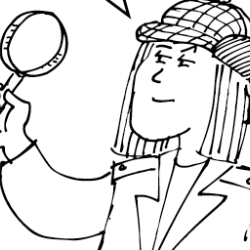Source Institutions
Source Institutions
Add to list Go to activity
Activity link broken? See if it's at the internet archive

This activity (on pages 35-43) lets learners analyze a "herd of elk" to detect the spread of a bacterial disease called brucellosis. The activity simulates how wildilfe veterinarians study elk in the wild by sampling only a subset of the animals. Based on a brucellosis problem with elk in Yellowstone National Park, learners cut out representations for two herds and then pick some at random to "test" for disease (denoted as a plus sign on a diseased animal). The results indicate that elk fed in Wyoming over the winter have more disease than the wild elk that go north to Montana
- 10 to 30 minutes
- 45 to 60 minutes
- 1 cent - $1 per group of students
- Ages 8 - 14
- Activity, Simulation
- English, Spanish
Quick Guide
Materials List (per group of students)
- pencil or pen
- colored pencils or crayons
- scissors
- tape
- Printouts of the map (p. 36), range area (p. 38), southern herd (p. 39), and northern herd (p. 42)
Subjects
-
Life Sciences
-
Diversity of Life
- Animals
- Viruses and Bacteria
-
Ecology
- Human Impact
-
Diversity of Life
-
Mathematics
-
Data Analysis and Probability
- Data Analysis
- Data Collection
- Probability
-
Data Analysis and Probability
-
The Nature of Science
-
The Scientific Process
- Conducting Investigations
- Gathering Data
- Formulating Explanations
-
The Scientific Process
Informal Categories
- Animals
- Nature and Environment
Audience
To use this activity, learners need to:
- see
Learning styles supported:
- Involves teamwork and communication skills
- Uses STEM to solve real-world problems
- Involves hands-on or lab activities
Designed specifically for
- Rural dweller
Culture, ethnicity, and gender
-
Girls
- Explicity developed for this group
Other
Foreign language versions of this resource:
Components that are part of this resource:
Includes alignment to state and/or national standards:
This resource is part of:
Access Rights:
- Free access
By:
Source Collection
- Science After School Consumer's Guide
Rights:
- All rights reserved, University of Nebraska State Museum and Nebraska 4-H, 2002
Funding Sources:
- National Science Foundation Informal Science Education Program, 9909496
- Howard Hughes Medical Institute
